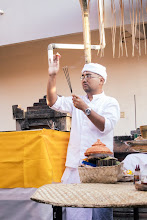 The Nikon 70-200m F2.8 VR is built to withstand the rigours of daily professional use, and the quality of construction is impeccable. From the super-smooth zoom and focus rings to the finely designed and engineered tripod mounting foot, everything about this lens exudes quality. Construction appears to be primarily of metal, and the lens is environmentally sealed, including a rubber gasket around the mount to prevent dust and water ingress into the camera. As is standard for this class of lens, both zooming and focusing are internal, which leads to a distinct impression of solidity to the 'one-piece' construction, and maintains the balance of the lens on the camera regardless of focal length.
The Nikon 70-200m F2.8 VR is built to withstand the rigours of daily professional use, and the quality of construction is impeccable. From the super-smooth zoom and focus rings to the finely designed and engineered tripod mounting foot, everything about this lens exudes quality. Construction appears to be primarily of metal, and the lens is environmentally sealed, including a rubber gasket around the mount to prevent dust and water ingress into the camera. As is standard for this class of lens, both zooming and focusing are internal, which leads to a distinct impression of solidity to the 'one-piece' construction, and maintains the balance of the lens on the camera regardless of focal length. In comparison to other 70-200mm F2.8 zooms, the Nikon is unusually long and slim in design, indeed unexpectedly so for a full-frame lens (especially given the fact that Nikon's engineers have had to squeeze in an optical stabilization unit). Overall it rather gives the impression that the glass is concentrated towards the front of the barrel, indeed the narrow tubular section immediately adjacent to the lens mount is purely air space (and we'll see the likely consequences of this on its optical performance in due course). Aside from that, it's quite similar in size to other lenses of this type, and potential upgraders should be aware that it is significantly larger and heavier than consumer telezooms such as the 70-300mm F4-5.6 VR. It's a serious photographic tool, but quite possibly not one you'll want to carry around all day on vacation.
Nikon AF-S VR-Nikkor 70-200mm 1:2.8G specifications
| Street price | • US: $1700 • UK: £1150 |
|---|---|
| Date introduced | April 2003 |
| Maximum format size | 35mm full frame |
| Focal length | 70-200mm |
| 35mm equivalent focal length (APS-C) | 105-300mm |
| Diagonal Angle of view (FF) | 34º - 12º |
| Diagonal Angle of view (APS-C) | 23º - 8º |
| Maximum aperture | F2.8 |
| Minimum aperture | F22 |
| Lens Construction | • 21 elements/15 groups |
| Number of diaphragm blades | 9, rounded |
| Minimum focus | 1.5m |
| Maximum magnification | 0.16x at 200mm |
| AF motor type | • Ring-type ultrasonic • Full-time manual focus |
| Focus method | Internal |
| Zoom method | Internal |
| Image stabilization | • 3 stops |
| Filter thread | • 77mm • Does not rotate on focus |
| Supplied accessories | • Front and rear caps • HB-29 Hood • CL-L2 Soft Case |
| Optional accessories | |
| Weight | 1470g (51.8 oz) |
| Dimensions | 87mm diameter x 215mm length (3.4 x 8.5 in) |
| Lens Mount | Nikon F only |
| Other | • Dust and moisture sealing |

 RSS Feed (xml)
RSS Feed (xml)



